midterm 260 final
.docx
keyboard_arrow_up
School
Northeastern University *
*We aren’t endorsed by this school
Course
2100
Subject
Business
Date
May 14, 2024
Type
docx
Pages
13
Uploaded by sph.ngn on coursehero.com
RSM 260 Midterm Questions
Time Allotted: 120 minutes
Writing window: October 20, 7:00PM EST to October 20, 9:00PM EST
Instructions:
●
Download the Word document that contains the questions for the test
●
Enter your responses to each question directly on this document
●
Start your answer immediately below each question on the same page as the question
●
Upload your document to Quizzes > Midterm Test within the time allotted
●
Upload the same document to Assignment > Midterm Test immediately after submitting the assessment through Quizzes. This additional step is required in order to permit all answers to be assessed by a plagiarism detection software
●
You will have 2 hours to complete this midterm test. ●
There are five essay questions below; provide your response to any four of
the five questions
●
Read the case/scenario for each and apply your knowledge to respond to the questions in a detailed manner.
●
Mark breakdown:
●
Each essay question is worth 10 marks. You will only be scored on the 4 questions you choose to answer for a total of 40 marks.
●
The exam is open-note and open-book. ●
You must complete the exam alone without anyone else’s assistance.
●
You must answer each question in fewer than 250 words
. Anything longer than 250 words will not be marked as part of your response.
Academic Integrity Reminder:
●
No collaboration among students during the test – it is an individual test and there is to be no collaboration
●
Submission of any answers written by another student or written collectively by a group of students is prohibited and constitutes plagiarism (submitting someone else’s work as your own)
●
Either seeking or providing the questions to another student prior to that student having begun their individual 2-hour period is similarly prohibited
●
Any of the preceding actions (among others addressed in the Code) is a serious violation of the U of T Code of Behaviour on Academic Matters and
could lead to a sanction up to assignment of a grade of zero for the entire course as well as a permanent indication on the student’s transcript of the reasons for the assignment of the zero grade
●
If you’re not sure about something in any of the questions, state your assumptions. ●
Once you click ‘submit’ or when the time is up, the test is considered submitted. The test cannot be ‘re-opened’ for re-submission.
Name
Sophia Nguyen Student #:
1007250671
QUESTION #1 (Total of 10 points). Answer all parts of Question #1 at the end of Question #1.
Your friend, S. Marty Pence, is a manager who wants his employee meetings to be more efficient. Knowing you’re taking RSM260, he has a question for you: “What’s the best way of configuring chairs in a conference room so that meetings are most productive?”
Right now, his plan for answering this question is to go to the library and check out all the books
he can find by famous CEOs. Somewhere in these books, he thinks, a CEO will describe how they configured chairs in meetings. S. Marty Pence figures that what worked for the CEO will certainly work for him.
(a)
Based on what you learned in class and in the textbook, explain in detail what is wrong with
S. Marty Pence’s plan to rely on a CEO book. Specifically, describe three reasons why this could be problematic. To make sure S. Marty understands each reason, give a brief example that illustrates each reason you provide. (4 points)
S. Marty asks, “Well if you can’t rely on CEOs for answers, how can I figure out the best way to configure chairs in my conference room?” You tell S. Marty that it’s best to use scientific methods to answer your question, but S. Marty doesn’t know what you mean by this. To help him understand…
(b)
Describe a study he could run, using one scientific method O.B. scholars use, to try to answer his question about chair configuration. For this answer, do not
describe an experiment. Make sure you are clear what the researcher would do in terms of study procedure. (2 points)
S. Marty is starting to see the value of using scientific methods. He says “Very interesting! And once you have the results of the study, you’ll know exactly what configuration of chairs causes
employees to be more productive, right?”
(c)
Explain to S. Marty why this assumption about causation may not be the case. (1 point)
(d)
To get the point across, provide an example you’ve come up with that illustrates your point about why causation cannot be safely assumed. Your example does not need to be related to chair configuration, but cannot involve any of the following: ice-cream, test performance, drowning, CO
2
, obesity (i.e., any examples presented in lecture). Make sure you’re clear about how this example illustrates your point. (3 points)
Type your answers to question #1 here and the next page:
In total, you answer to this question cannot exceed 250 words (anything longer will not be marked as part of your response).
(a)
)
-
First, this method relies of N of 1, which means he’s wrongfully extrapolating a pattern from a single data point (one CEO’s story), leading to over-generalization, and inaccuracy. For example, if one person did not study for an exam but scored an 80%, that is not a guarantee that, that strategy will work for everyone
-
Second, each person is unique, therefore, one CEO’s team may consist heavily of extroverts who would perform best sitting close to one another to encourage brainstorming, while Pence’s team may be more introverted and would excel sitting farther apart, absorbing information -
Third, each group is unique in size therefore one CEO’s who’s team is small may prefer to be seated close together while Pence’s team may be larger and would require tables to be grouped together by department or division.
b)
Theory, dictating the 5 W’srelation between variables (ex. Productivity & chairs, then to a hypothesis that specifies a prediction of how the variable interact.. Next, collect data. Finally, to verify the validity of the hypothesis he would identify a potential correlation or lack thereof, and the strength of correlation between the variables. (c)
Correlation does not equal causation, there may be a third variable that influences both. (d)
Netflix’s stock has been on a downward trend and at the same time, the weather has been very hot. Doesn’t mean that heat causes Netflix’s stock to increase. Instead, a third variable, being free-time is influencing the data, where in the summer people have more and are purchasing Netflix subscription. QUESTION #2 (Total of 10 points).
Answer all parts of Question #2 at the end of Question #2.
Read the following personality categories from a pop-psychology article about personality in the workplace: “4 Employee Personality Types: Understanding and Managing Different Personalities in the Workplace”
4 Employee Personality Types in the Workplace
Here are 4 personality types each represented by a specific person.
Personality Type #1: Ambitious and Amiable Amy
Amy is the type of employee who is smart and eager to help others. She gets along well with the
other three employee personality types because she doesn’t like conflict. She is well-balanced and aims for success, while generally being quite satisfied with her life. She also works well under pressure and doesn't get too stressed out at work. Amy can inspire others to follow her due to her friendly, sociable personality. However, employees with Amy’s personality type might
lack attention to detail.
2. Highly-Functional Introvert Ivan
Ivan is
one of your company’s pillars. He has been in the company long enough to know all the intricacies of his work and is fairly experienced in what he does. Ivan is a critical thinker and is prepared for most tasks. His personality type is quiet but always pleasant to be around. He focuses on his tasks and takes the job seriously. In essence, he loves what he does and wants to get it right. However, he rarely expresses his own needs, resulting in him being unhappy. 3. Anxious Warrior Wanda
We are sure you have met an employee like Wanda before; she is always rushing to get something done while constantly complaining about her stress and workload to everyone. She can be cold and often unwilling to help others. However, she is also motivated, meets deadlines,
and works longer hours than anyone else. 4. Intense Temperament Terry
Terry’s personality type is the trickiest of all employee personality types. He may experience sudden bursts of anger or become easily irritated by minor incidents. He can also engage in inappropriate workplace behavior and is often rude to colleagues. He is unsatisfied with his job and life. However, he is often very creative and likes to engage in a variety of different tasks and
pursuits. Questions:
a)
There are several issues with this type of personality categorization. Applying what you’ve learned about other personality categorization techniques/tests (like the MBTI), what do you think about the “four employee personality types” in this article? What might be some of the issues with this type of categorization? (
2 pts
)
Your preview ends here
Eager to read complete document? Join bartleby learn and gain access to the full version
- Access to all documents
- Unlimited textbook solutions
- 24/7 expert homework help
Related Questions
Esc
Hg Time: 1 hour, 51 minutes, 08 seconds.
* Question Completion Status:
1
2
3
4
5
6
7
8
9
10
12
13 14 15
16
17
18
31
32
19 20 21
22 23 24
25 26
28
29 30
A Moving to another question will save this response.
Question 16 of 32
Question 16
1 points
Save Answer
CASE: The correct implementation of new product development process helps minimize the risk of product failure. When Netflix wanted ideas for improving
the accuracy of its Cinematch online recommendation system, it decided to "open it up to the world," promising a $1 million prize for the best solution.
QUESTION: Identify the idea generation tool used by Netflix in this example.
***
For the toolbar, press ALT+F10 (PC) or ALT+FN+F10 (Mac).
BIUS Paragraph
V AV
V
Ix
V
L %0
V System Font V 12pt
8
C
FS
BI
A+
F3
B
!
1
F1
@
F2
F4
2
TW
11
الالالال
ER
F6
T
6
F7
Y
&
17
F8
*
U
8
F9
(
F10
9
27
-
F11
0
POWERED BY TINY
PriSc
F12
P
1
Inse
arrow_forward
Mangement question
Management is a series of continuous, inter-related functions with no pre-determined sequence’. Explain.
arrow_forward
One case is missing. 5 cases are req
arrow_forward
* Question Completion Status:
Remark:You will have 5 questions regarding the same problem but in each question the numbers will be different
An advertising company offer three types of mediums: television, newspaper and radio . The cost for each medium with its audience
coverage is given below.
Television
Newspaper
Radio
Cost per advertisement (S)
2400
700
500
Audience per advertisement
95,000
33,000
10,000
The company is capable of using a number of newspaper advertisement slots up to 10( restriction on the number of advertisement in the
newspaper). Moreover, in order to balance the advertising among the three types of media, the total number of advertisements on radio
should not occur more than 48% of total number of advertisement, and at least 8% of the total number of advertisements should occur on
television. The weekly advertising budget is $22800. How many advertisements should be run in each of the three types of media to
maximize the total audience?
If we assume the number of…
arrow_forward
I need question 11, question 10 is only for background information
arrow_forward
subject: Software Process and Management
Book : Software Process Definition and Management [J€urgen M€unch • Ove Armbrust • Martin Kowalczyk • Mart ́ın Soto]
Question :
Describe two typical problems that may occur while deploying a prescriptive process model. For each of these problems, discuss potential strategies for overcoming it.
arrow_forward
Question No: 04
-20 Que
022mb21082
This is a subjective question, hence you have to write your answer in the Text-Field given below.
mponen22mb 2ave to writ
644-2023
Explain the different components of External environment with an example for each.
2003
Options
2023 2022m/
-2023/03/12-2022mb208
22
2023/03/12-20
arrow_forward
Most often, researchers aim to design studies with large amounts of power.
Question 20 options:
true
false
arrow_forward
Instruction: Prepare a check sheet to analyze the data below from customer complaints, then prepare a list of recommendations that will address these complaints.
Case: Tip Top Markets
Tip Top Markets is a regional chain of supermarkets located in the southeastern United States. Karen Martin, manager of one of the stores, was disturbed by the large number of complaints from customers at her store, particularly on Tuesdays, so she obtained complaint records from the store’s customer service desk for the last nine Tuesdays.
June 1
out of orange yogurt
produce not fresh
bread stale
lemon yogurt past sell date
checkout lines too long
couldn’t find rice
overcharged
milk past sell date
double charged
stock clerk rude
meat smelled strange
cashier not friendly
charged for item not purchased
out of maple walnut ice cream
couldn’t find the sponges
something green in meat
meat tasted strange
didn’t like music
store too cold…
arrow_forward
I got the first part correct on my study guide, but I need some assistance on question 2 :)
arrow_forward
See images for question details.
arrow_forward
subject: Software Process and Management
Book : Software Process Definition and Management [J€urgen M€unch • Ove Armbrust • Martin Kowalczyk • Mart ́ın Soto]
Question :
Explain the difference between continuous and model-based improvement approaches
arrow_forward
Question 2
Part D and E full explain all solution send me i give you thumb....
Full explain this question and text typing work only thanks
arrow_forward
22 my.post.edu/CMCPort X Bb Content
← → C
X Bb Take Test: Chapter 6 X
•
post.blackboard.com/webapps/assessment/take/launch.jsp?course_assessment_id=_290684_1&course_id=_123680_1&content_id=8
Question Completion Status:
QUESTION 8
Probable cause is required for a police officer to conduct a stop and frisk.
O True
O False
QUESTION 7
A law enforcement officer needs reasonable suspicion or probable cause that a crime has taken place when using the "knock and talk" strategy.
O True
O False
QUESTION 9
Which Supreme Court case established the legal parameters of stop and frisk?
O Weeks v Ohio
O Mapp v Ohio
Terry v Ohio
O Carroll v. United States
BO'F
Clear
2
Click Save and Submit to save and submit. Click Save All Answers to save all answers.
HH
Q Search
Academic Writer - Ho X
5
Wordtune Editor
X
G
arrow_forward
# No data missing
# Complete Question
arrow_forward
Select the best answer for the question.
6. What order fulfillment process is Walmart most likely using for the majority of its products in stores?
O A. Assembly line
OB. Make-to-stock
C. Batch
D. Make-to-order
O Mark for review (Will be highlighted on the review page) J
>
arrow_forward
Instruction: Prepare a check sheet to analyze the data below from customer complaints, then prepare a list of recommendations that will address these complaints.
Case: Tip Top Markets
Tip Top Markets is a regional chain of supermarkets located in the southeastern United States. Karen Martin, manager of one of the stores, was disturbed by the large number of complaints from customers at her store, particularly on Tuesdays, so she obtained complaint records from the store’s customer service desk for the last nine Tuesdays.
arrow_forward
Q 2. Major process activities are important for an useful process to be carried out in a sequence, explain how?. Copying with Change method is useful for which size projects, explain your answer with explaination.
arrow_forward
AutoSave Off H₂C= PDPMT_PL102_06 June 2023_1 No Label ✓
File Home Insert Draw Design Layout References
X
CA
W
Paste
Clipboard
Page 6 of 7
■
Arial
B|I U
U
12 of 956 words
Q Search
✓12
ab
ab x₂ x
Font
A A Aa A
A
x ADA
А
Α
English (South Africa)
9°
Review
Paragraph
interpret facts and events differently.
Question:
3.1
3.2
View
Mailings
Help
EE F✓ = = £↓¶
≡ ≡ ≡ ~
4
Text Predictions: On
Search
5
Adapted from Kloppenborg TJ, Anantatmula V and Wells KN (2019) Contemporary Project Management
4th edition Cengage
Accessibility: Unavailable
Normal
5
No Spacing
Explain what is meant by the notion that "some conflicts on projects are useful..."
Discuss the strategies a project manager can employ to discourage or minimise
'destructive' conflict in a project management environment.
W
Styles
Heading 1
5
A Thembi Mdepa TM
Editing
Focus
Comments Editing
Dictate
Voice
Sensitivity
Sensitivity Editor
ENG
US
Editor
4x
Share
Reuse
Files
Reuse Files
V
+ 100%
08:33
2023/06/06
&
arrow_forward
Question 6
6. Why does new product development theory show the process as an inverted triargle, with the first stage at the top of the triangle?
O Because the number of ideas that will result in viable new products decreases as the process progresses.
O Because there are more stage gates in the early stages of the process.
O Because more money is spent in the early stages of the process than at later stages.
O Because each project's potential revenue decreases as it progresses through the process
Question 8
8. Southwest Airlines screens potential employees rigorously and uses several unique interview processes to hire the right people. Southwest also has an extensive training progran for new employees
These tactics reduce
in service delivery,
O Varlability
O Overtead costs
O Search qualities
O Corsintence
Question 10
2 pts
10. Ambient Management, Inc was experiencing a gap in the services it was providing. It dosed the gap by ensuring that its customer-facing staff had the skills,…
arrow_forward
Question 22
Lead time is the time between when an order is ________ and when it is ________.
Group of answer choices
submitted, delivered
submitted canceled
delivered, submitted
returned, cancelled
arrow_forward
Q23 all of these pictures are from the same initial question and I need help please!! Help with a b c d e f and g which is not shown but here is the question:
g-
arrow_forward
See picture for question details.
arrow_forward
Time left 0:35:31
Question 4
Answer saved
Marked out of 1.00
Flag question
Question text
The Campbell Company is evaluating the proposed acquisition of a new milling machine. The machine’s base price is $108,000, and it would cost another $12, 500 to modify it for special use by your firm. The machine will be sold after three years for $65,000. The applicable depreciation rates are 33 percent, 45 percent, 15 percent, and 7 percent. The machine would require an increase in net operating working capital (inventory) of $5,500. The machine would have no effect on revenues, but is expected to save the firm $44,000 per year in before tax operating costs, mainly labor. Campbell’s marginal tax rate is 35 percent.
What is the Net Investment (NINV)
arrow_forward
Required information
Problem 9-2
[The following information applies to the questions displayed below.]
An air-conditioning repair department manager has compiled data on the primary reason for 41 service calls for the previous week, as shown in the table.
JobNumber
Problem/Customer Type
JobNumber
Problem/Customer Type
JobNumber
Problem/Customer Type
301
O/C
315
W/R
329
N/C
302
N/C
316
F/R
330
O/R
303
F/R
317
F/R
331
N/R
304
O/R
318
N/R
332
W/C
305
F/R
319
F/R
333
W/C
306
N/R
320
N/R
334
N/R
307
N/C
321
O/C
335
F/C
308
O/R
322
W/C
336
W/C
309
N/R
323
F/R
337
F/C
310
N/C
324
O/C
338
N/R
311
O/C
325
W/C
339
N/R
312
O/R
326
N/C
340
N/C
313
N/R
327
O/R
341
N/R
314
O/R
328
N/R
Key:
Problem type:
Customer type:
N
= Noisy
C
= Commercial customer
F
= Equipment failure
R
= Residential customer
W
= Runs warm
O
= Odor
Problem 9-2 Part a
a.
Using the data, prepare a check sheet for the problem…
arrow_forward
Please answer question with details on how to do it. Thank you.
arrow_forward
Which of the following terms implies an increase in responsibility and control in the vertical direction?
Question 10Answer
A.
job satisfaction
B.
job enlargement
C.
job enrichment
D.
job re-design
E.
job rotation
arrow_forward
Qno1.
Transcript of Respondent One’s Interview
I: Describe your overall experience of being a member of Club at University?
R.1: My overall experience is not that too long, because it has just launched before 2, 3 months. My experience so far is amazing as I can notice some good changes in my body and I have become more attentive now.
I: What are the general advantages of being a member of Club?
R.1: The general advantages of Club are that are that I used to lead a sedentary lifestyle but now I consider myself both physically and psychologically fit. My diet has been improved because the Instructor has helped me a lot in designing a diet chart. I have made new friends and this is improving my interpersonal skills as well. I would say I am gaining my self-confidence that makes me feel good about myself. On a lighter note, my teachers are also noticing such changes in my personality and they appreciate this transformation.
I: What are the disadvantages of…
arrow_forward
please help with the box that isnt completed :)
arrow_forward
Required information
Camp Rainbow offers overnight summer camp programs for children ages 10–14 every summer during June and
July. Each camp session is one week and can accommodate up to 200 children. The camp is not coed, so boys
attend during the odd-numbered weeks and girls attend during the even-numbered weeks. While at the camp,
participants make crafts, participate in various sports, help care for the camp's resident animals, have cookouts and
hayrides, and help assemble toys for local underprivileged children.
The camp provides all food as well as materials for all craft classes and the toys to be assembled. One cabin can
accommodate up to 10 children, and one camp counselor is assigned to each cabin. Three camp managers are on-
site regardless of the number of campers enrolled.
Following is the cost information for Camp Rainbow's operations last summer:
Number of
Cost to Run
Campers
172
Week
Camp
$13,810
9,350
11,360
14,380
14,000
12,440
10,180
8,440
112
3
148
4
184
5
174
152…
arrow_forward
Quèstion 6
The R-W-W framework is in the third stage of the new product development process.
True
False
A Moving to another question will save this response.
hp
G米
&
%24
%23
arrow_forward
Question: Describe one current technology that can be used to ensure the safety of event operations.
Answer: CCTV camera can be used in the events to ensure the safety of event operations and provide the best possible security for the attendees. These cameras can be monitored through applications on smart devices and it is easily accessible on smartphones as well as tablets. This allows the management to keep track of the event's situation and the whole process at the same time they can make a fast response if anything happened.
give a reflection about the answer. (15-30 words)
arrow_forward
QUESTION 7
A simple visual aid is better to use than one that describes complex relationships between many entities.
O True
O False
arrow_forward
SEE MORE QUESTIONS
Recommended textbooks for you
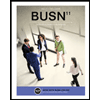
BUSN 11 Introduction to Business Student Edition
Business
ISBN:9781337407137
Author:Kelly
Publisher:Cengage Learning
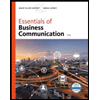
Essentials of Business Communication (MindTap Cou...
Business
ISBN:9781337386494
Author:Mary Ellen Guffey, Dana Loewy
Publisher:Cengage Learning
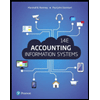
Accounting Information Systems (14th Edition)
Business
ISBN:9780134474021
Author:Marshall B. Romney, Paul J. Steinbart
Publisher:PEARSON
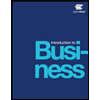
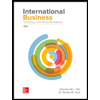
International Business: Competing in the Global M...
Business
ISBN:9781259929441
Author:Charles W. L. Hill Dr, G. Tomas M. Hult
Publisher:McGraw-Hill Education
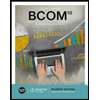
Related Questions
- Esc Hg Time: 1 hour, 51 minutes, 08 seconds. * Question Completion Status: 1 2 3 4 5 6 7 8 9 10 12 13 14 15 16 17 18 31 32 19 20 21 22 23 24 25 26 28 29 30 A Moving to another question will save this response. Question 16 of 32 Question 16 1 points Save Answer CASE: The correct implementation of new product development process helps minimize the risk of product failure. When Netflix wanted ideas for improving the accuracy of its Cinematch online recommendation system, it decided to "open it up to the world," promising a $1 million prize for the best solution. QUESTION: Identify the idea generation tool used by Netflix in this example. *** For the toolbar, press ALT+F10 (PC) or ALT+FN+F10 (Mac). BIUS Paragraph V AV V Ix V L %0 V System Font V 12pt 8 C FS BI A+ F3 B ! 1 F1 @ F2 F4 2 TW 11 الالالال ER F6 T 6 F7 Y & 17 F8 * U 8 F9 ( F10 9 27 - F11 0 POWERED BY TINY PriSc F12 P 1 Insearrow_forwardMangement question Management is a series of continuous, inter-related functions with no pre-determined sequence’. Explain.arrow_forwardOne case is missing. 5 cases are reqarrow_forward
- * Question Completion Status: Remark:You will have 5 questions regarding the same problem but in each question the numbers will be different An advertising company offer three types of mediums: television, newspaper and radio . The cost for each medium with its audience coverage is given below. Television Newspaper Radio Cost per advertisement (S) 2400 700 500 Audience per advertisement 95,000 33,000 10,000 The company is capable of using a number of newspaper advertisement slots up to 10( restriction on the number of advertisement in the newspaper). Moreover, in order to balance the advertising among the three types of media, the total number of advertisements on radio should not occur more than 48% of total number of advertisement, and at least 8% of the total number of advertisements should occur on television. The weekly advertising budget is $22800. How many advertisements should be run in each of the three types of media to maximize the total audience? If we assume the number of…arrow_forwardI need question 11, question 10 is only for background informationarrow_forwardsubject: Software Process and Management Book : Software Process Definition and Management [J€urgen M€unch • Ove Armbrust • Martin Kowalczyk • Mart ́ın Soto] Question : Describe two typical problems that may occur while deploying a prescriptive process model. For each of these problems, discuss potential strategies for overcoming it.arrow_forward
- Question No: 04 -20 Que 022mb21082 This is a subjective question, hence you have to write your answer in the Text-Field given below. mponen22mb 2ave to writ 644-2023 Explain the different components of External environment with an example for each. 2003 Options 2023 2022m/ -2023/03/12-2022mb208 22 2023/03/12-20arrow_forwardMost often, researchers aim to design studies with large amounts of power. Question 20 options: true falsearrow_forwardInstruction: Prepare a check sheet to analyze the data below from customer complaints, then prepare a list of recommendations that will address these complaints. Case: Tip Top Markets Tip Top Markets is a regional chain of supermarkets located in the southeastern United States. Karen Martin, manager of one of the stores, was disturbed by the large number of complaints from customers at her store, particularly on Tuesdays, so she obtained complaint records from the store’s customer service desk for the last nine Tuesdays. June 1 out of orange yogurt produce not fresh bread stale lemon yogurt past sell date checkout lines too long couldn’t find rice overcharged milk past sell date double charged stock clerk rude meat smelled strange cashier not friendly charged for item not purchased out of maple walnut ice cream couldn’t find the sponges something green in meat meat tasted strange didn’t like music store too cold…arrow_forward
- I got the first part correct on my study guide, but I need some assistance on question 2 :)arrow_forwardSee images for question details.arrow_forwardsubject: Software Process and Management Book : Software Process Definition and Management [J€urgen M€unch • Ove Armbrust • Martin Kowalczyk • Mart ́ın Soto] Question : Explain the difference between continuous and model-based improvement approachesarrow_forward
arrow_back_ios
SEE MORE QUESTIONS
arrow_forward_ios
Recommended textbooks for you
 BUSN 11 Introduction to Business Student EditionBusinessISBN:9781337407137Author:KellyPublisher:Cengage Learning
BUSN 11 Introduction to Business Student EditionBusinessISBN:9781337407137Author:KellyPublisher:Cengage Learning Essentials of Business Communication (MindTap Cou...BusinessISBN:9781337386494Author:Mary Ellen Guffey, Dana LoewyPublisher:Cengage Learning
Essentials of Business Communication (MindTap Cou...BusinessISBN:9781337386494Author:Mary Ellen Guffey, Dana LoewyPublisher:Cengage Learning Accounting Information Systems (14th Edition)BusinessISBN:9780134474021Author:Marshall B. Romney, Paul J. SteinbartPublisher:PEARSON
Accounting Information Systems (14th Edition)BusinessISBN:9780134474021Author:Marshall B. Romney, Paul J. SteinbartPublisher:PEARSON
 International Business: Competing in the Global M...BusinessISBN:9781259929441Author:Charles W. L. Hill Dr, G. Tomas M. HultPublisher:McGraw-Hill Education
International Business: Competing in the Global M...BusinessISBN:9781259929441Author:Charles W. L. Hill Dr, G. Tomas M. HultPublisher:McGraw-Hill Education

BUSN 11 Introduction to Business Student Edition
Business
ISBN:9781337407137
Author:Kelly
Publisher:Cengage Learning

Essentials of Business Communication (MindTap Cou...
Business
ISBN:9781337386494
Author:Mary Ellen Guffey, Dana Loewy
Publisher:Cengage Learning

Accounting Information Systems (14th Edition)
Business
ISBN:9780134474021
Author:Marshall B. Romney, Paul J. Steinbart
Publisher:PEARSON


International Business: Competing in the Global M...
Business
ISBN:9781259929441
Author:Charles W. L. Hill Dr, G. Tomas M. Hult
Publisher:McGraw-Hill Education
